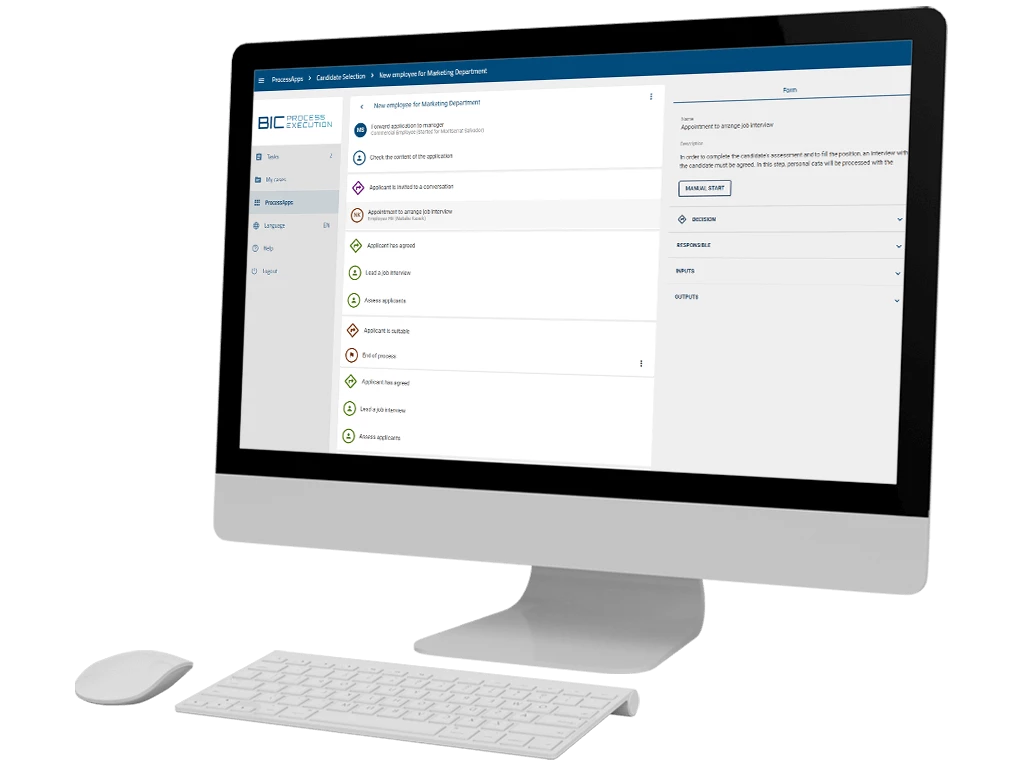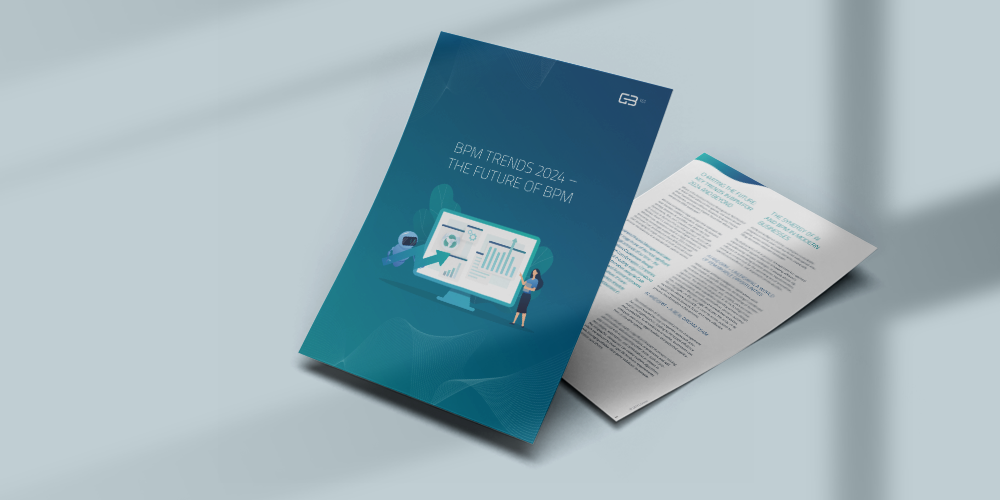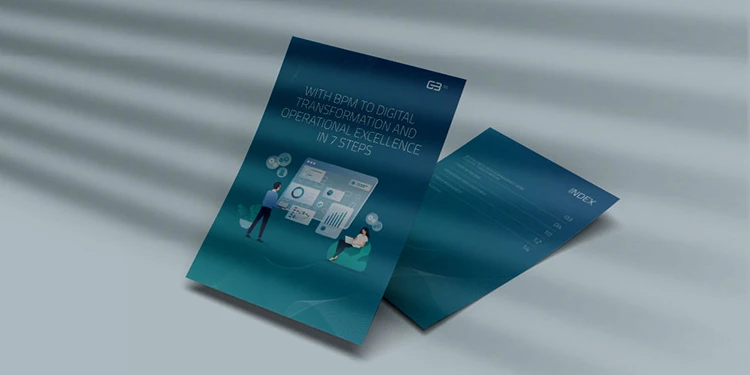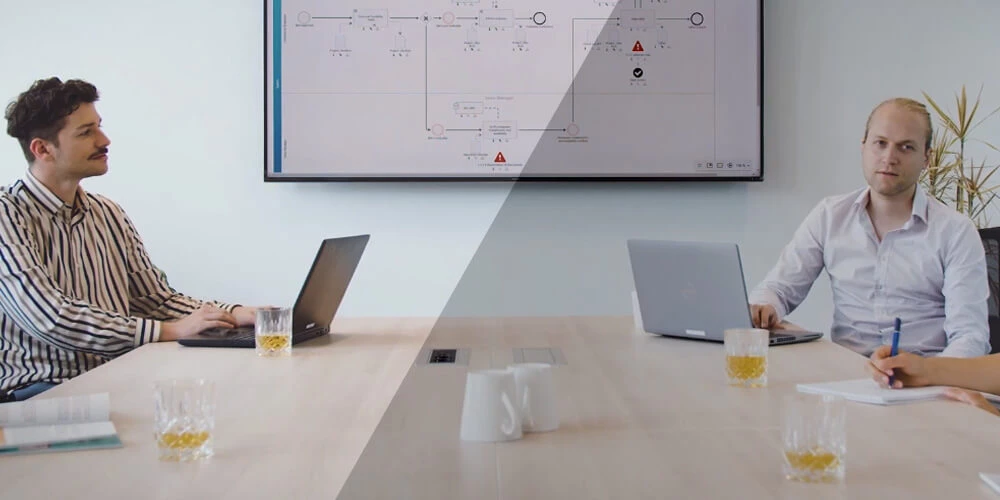Continuous Improvement Process (CIP)
The continuous improvement process strives for continuous improvement in all areas of a company. Particular attention is paid to product, process and service quality. The ultimate goal is to strengthen a company's competitiveness sustainably through continuous improvements in small steps.

What is the CIP and how is it used?
As a management concept, the CIP principle is strongly inspired by the Japanese Kaizen. In Japan, Kaizen (literally "change for the better") refers to a philosophy of life and work that strives for continuous and infinite improvement of activities, processes or procedures. A typical characteristic of Kaizen is to take the smallest possible steps to improve current processes. Instead of large-scale and lengthy projects, many small and quickly realizable measures are in the focus within the continuous improvement approach as well.
In the 1990s, the first industrial companies in Germany began to implement CIP methods primarily in series production. Employees were involved in so-called "CIP teams" to identify suggestions for improvement and formulate new ideas and solutions for implementation.
Today, the continuous improvement model is already implemented in many areas of work and business. It is a characteristic of an employee-oriented company culture in which employee ideas and teamwork are expressly encouraged. The important technique for continuous improvement is that all business processes and continual activities are repeatedly put to the test.
From day to day, every single employee must ask themselves the question anew: What can be improved? And each individual employee is called upon to take measures for improvement himself/herself. With the help of training courses, seminars and quality circles for continuous improvement techniques, the methodology of CIP is brought closer to the employees. In this way, the improvement strategy is anchored in the employees' thinking and incrementally becomes a part of the company-wide continuous improvement culture.
Continuous improvement for a company's continuous quality enhancement and success
Companies all pursue the same goal: they want to survive on the market in the long term and satisfy their own customers as best as they can. Since the market is in a permanent state of change, companies must continuously develop and improve their customer services and processes in order to be successful in the long term. The continuous improvement process plays an essential role here: it helps to continuously rethink and adapt processes and workflows.
Specifically, the following goals can be achieved by implementing the continuous improvement process:
- Quality and efficiency improvements
- Reduction of costs
- Prevention of wasted resources
- Increasing competitiveness and productivity
- Activation of the full performance potential of all employees
- Increased customer satisfaction
Let's take a closer look at the implementation of CIP processes:

The four-stage control loop of the continuous improvement cycle
Those who need support with the CIP onboarding in their company can take a closer look at the Plan-Do-Check-Act (PDCA) cycle. It is used as a common continuous improvement tool and describes the basics of an improvement process in four steps:

Plan
In the first step, the current state and the possible improvement potentials are described, the causes for the problem are analyzed and the CIP target is formulated. In addition, metrics for achieving the target state are defined.
Do
The second step is the implementation phase. The measures to achieve the target state are fixed and communicated to the team members involved.
Check
The third step is the check. The knowledge gained from implementing the measures and the results achieved are reflected. If necessary, the measures are corrected.
Act
In the fourth and final step, the experience gained in the problem-solving process is evaluated. From this, standards for future action are derived.
The listed Plan-Do-Check-Act steps are considered a classic strategy for continuously process improvement. Whenever new potential for improvement is identified, a new PDCA cycle is started. The primary goal is to be able to establish a new standard in the company at the end of the Act step, which represents an improvement in the long term.
Important features of the improvement process
In addition to the PDCA cycle and other various methods, there are simple characteristics that are crucial to the CIP approach. Quick and unbureaucratic improvements can be easily implemented thanks to the following principles: Sorting out, cleaning up, avoiding, tidiness, orderliness, simplicity, standardization and adherence to rules.
Common terms that play an important role in the continuous process. The simple cleaning up and sorting out of old processes and documents are just as important as the clean and orderly maintenance of the new structures. The waste of resources, time and costs is to be avoided and simplicity in the process representation and definition of rules is to be maintained.
In this way, improvements in processes and initial successes can be achieved quickly. Other factors that need to be considered, depending on the industry and company, relate to changes in products, customer requirements, or legal requirements, for example. It is therefore essential to regularly maintain changes in the environment of the continuous process. Our CIP software supports you in this.

CIP as the basis for a successful quality management
Furthermore, the continuous improvement process is also considered a basic principle of quality management and is now part of the well-known DIN EN ISO 9001 certification. In this context, the CIP method stands for targeted and continuous improvements in all areas of a company. The resulting measures are to be documented and controlled. In the best case, the results are directly saved as a new standard to ensure that defects and errors are not repeated. As an obligatory part of standard-compliant quality management, CIP applies to all processes in a company.
For standard-compliant quality management and professional methods for implementing the continuous improvement process, many companies use a process management software such as BIC Platform. With the help of this business process management software, it is possible to centrally document all processes in the company and analyze them concerning their optimization potential in order to implement targeted and process-oriented improvements. Involve your employees and enable direct suggestions for improvement to the published processes. Thanks to digital workflows for process execution, inefficiency, weak points and errors are identified at an early stage and are taken into account in the improvement process.
CIP and other management methods
Anyone dealing with the topic of continuous improvement often encounters the terms "Lean" and "Six Sigma" in addition to CIP. What are the exact differences and similarities?
Six Sigma is considered a management system and has CIP as its basis. While CIP is all about the speed of improvements, Six Sigma is more focused on the perfect solution, which is above all measurable and based on statistical methods. Six Sigma represents a method based on facts and metrics to improve individual processes (projects). Therefore, it is also referred to as a Six Sigma improvement project.
CIP, on the other hand, usually assumes a solution approach that has already been guessed at and tries to use this inductively to solve the problem. However, an entry into improvement systems is easier and more target-oriented to realize via the manifold as well as stand-alone sustainable methods of the CIP.
Lean is considered a management system as well, and at the same time a method that originated in Japan. Literally translated, Lean management means "creating value without waste". It defines the totality of all methods and ways of thinking that contribute to the efficient design of processes and activities. CIP is thus an integral part of Lean - both in terms of methodology and the Kaizen mindset.
Start your continuous improvement process now and strive for better performance
Would you like to take a closer look at your processes using CIP and optimize them on an ongoing basis? Then get to know BIC Process Design and implement CIP methods with the help of a process-oriented management tool. Convince yourself of the extensive functions and benefit from the intuitive usability!

Process Modeling with
BIC Process Design
Our innovative BPM tool BIC Process Design ensures more transpareny and smooth work processes. Find out how easy it can be to model your processes, give access to them company-wide and jointly optimize workflows.

Test BIC Process Design
30 days for free
BIC Process Design impresses users worldwide with its unique user-friendliness and innovative design. Convince yourself of the powerful functionalities of our BPM software and model your first processes in our trial version.
Further resources
We have the information you need to unleash your full process potential. Take a look at our resources and start improving your business performance today.




